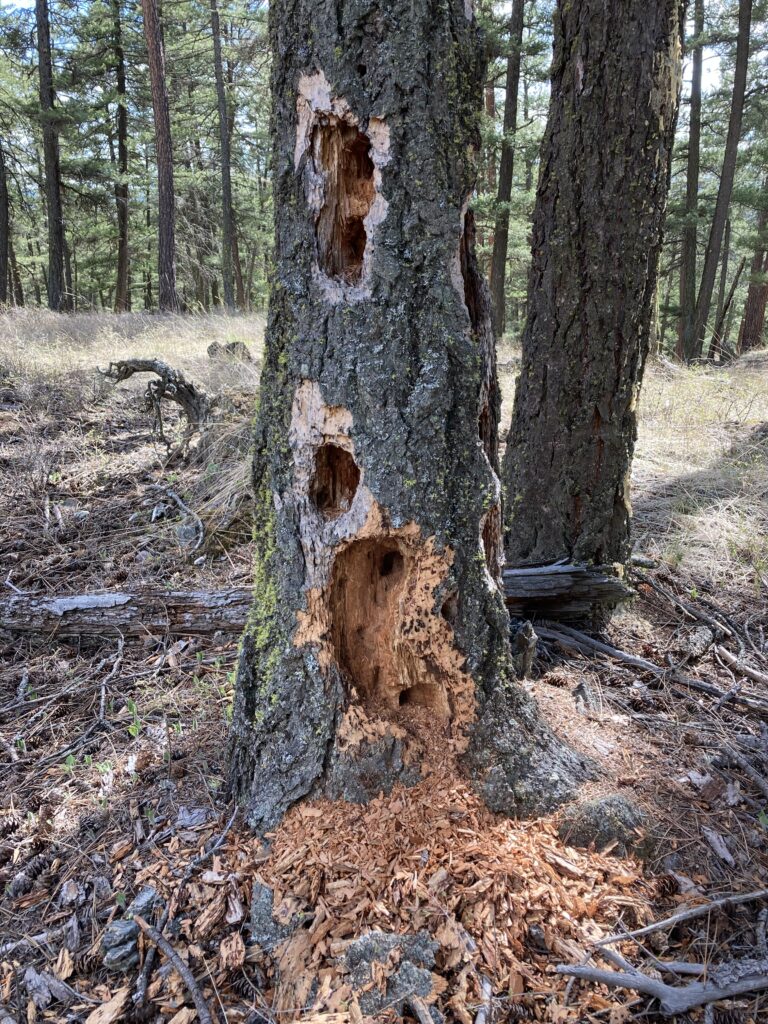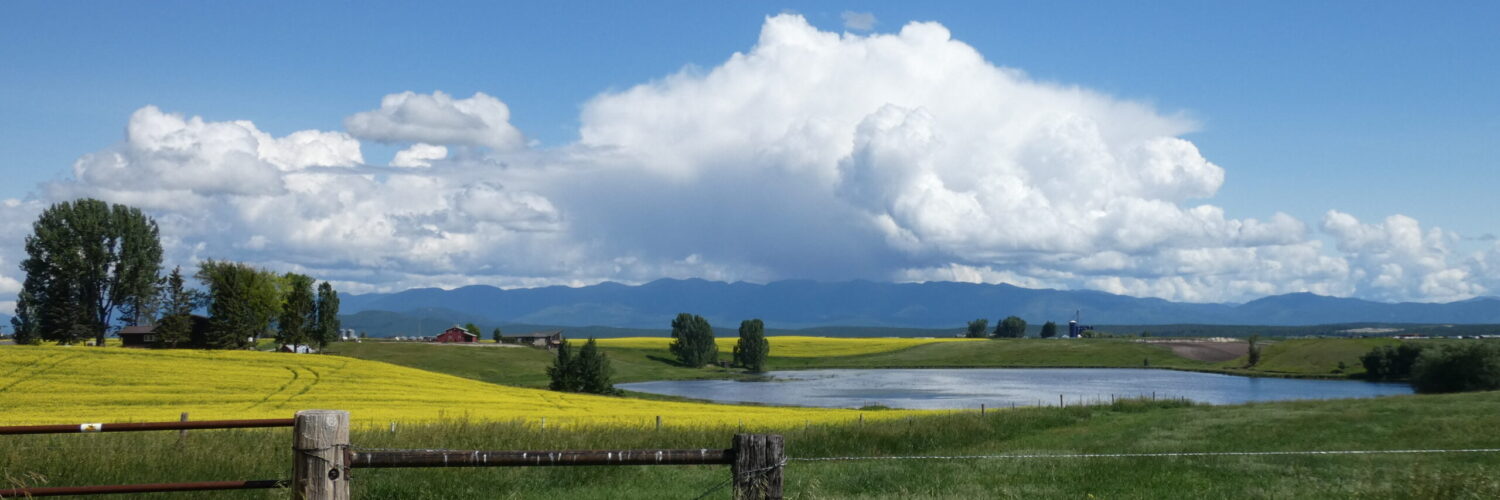by Skip Via
skip@westvalleynaturalists.org
Pileated woodpeckers are the largest woodpeckers in North America. (The ivory-billed woodpecker of the southeastern US swamps and marshes is larger, but it is considered “definitely or probably” extinct.) While pileated woodpeckers are not exactly rare in the valley–I’ve encountered them year ’round in the Happy Valley State Trust Lands and the Pig Farm State Trust Lands (see Locations)–they are infrequent visitors to areas of the valley with fewer trees and more houses. That’s why it’s such a rare treat to see one in the back yard.

This female (the red cap on males covers the entire forehead and they have a thin red mustache) decided to spend about 15 minutes on our suet feeder on 1/6/21. She easily fended off several attempts by waves of northern flickers and blue jays to dislodge her from her perch while consuming nearly a quarter of a block of suet. When she was done, she spent another 20 minutes foraging for insects on the ponderosa pines that are common in the immediate area. In the six+ years that we’ve lived here, this is only the third or fourth sighting of a pileated Woodpecker we’ve made at our house. I’ve been unable to capture an image of one in flight, but they’re quite spectacular when flying.
Pileated woodpeckers are mostly insectivores, although they will eat seeds and berries. Their main prey is ants and insect larvae, for which they will bore deeply into trees to locate. They can lap up prey using their very long, sticky tongues and can often be seen foraging on decaying logs which may be rich in their preferred foods. In their hunt for food, they leave large, usually rectangular holes in trees, often very deep. These holes are used by a variety of songbirds and even some owls for nesting and winter shelter. Their own nests are usually very deep, sometimes with multiple entrances, and they create new nests each year. The sound of their pecking is louder and typically much slower than other woodpeckers, and their excavation sites may be littered with large chunks of wood that they have dislodged.
The three images below are from Happy Valley. The depth of the bores is difficult to see in these photos, but the two rightmost bores are at least 6 inches deep.

Western Montana is at the southern edge of the year ’round range for the northern pileated woodpecker, where they are still considered uncommon.
A short video:



